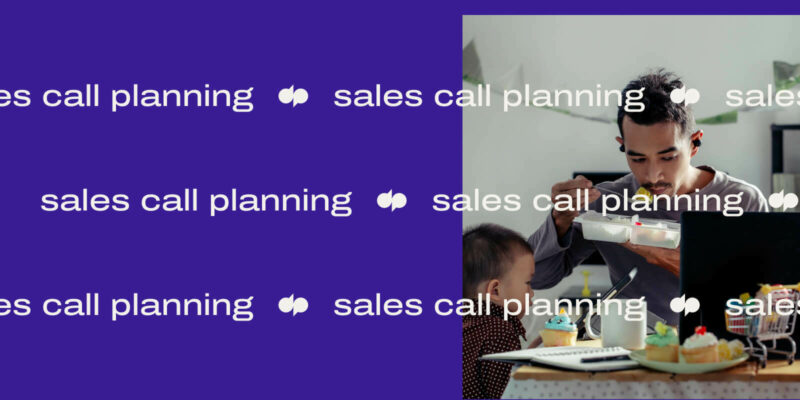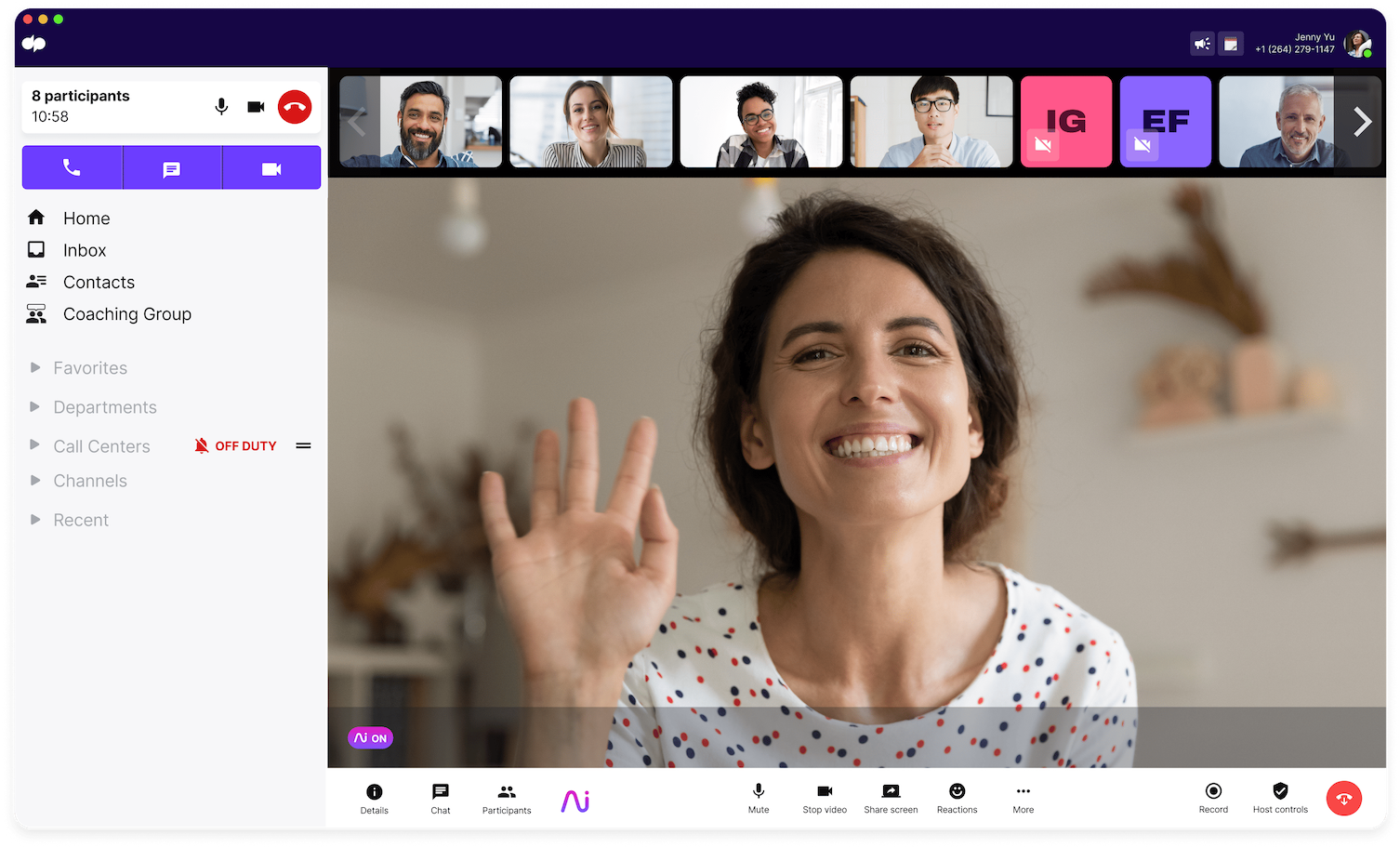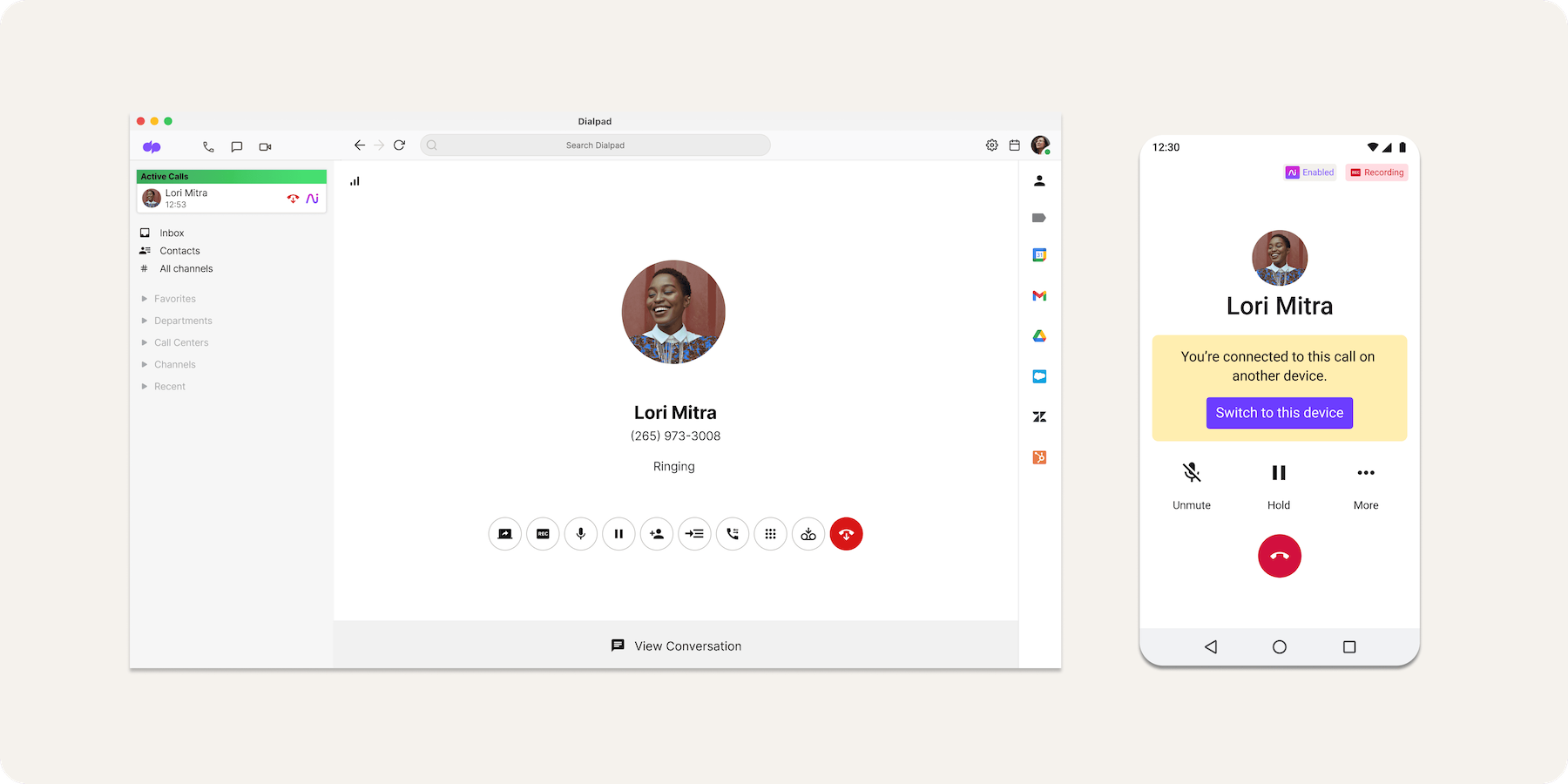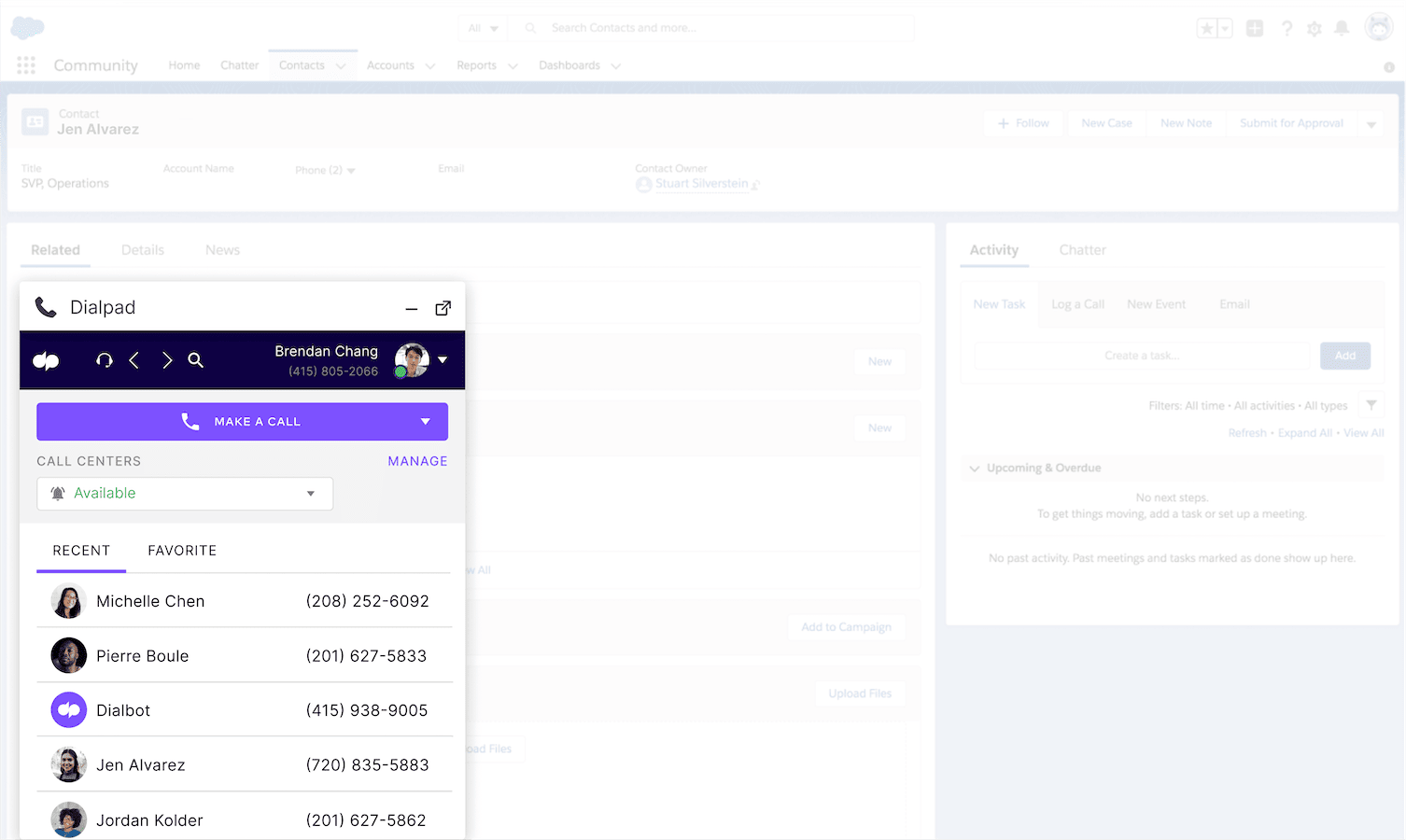Sales call planning: Equipping your reps to make the best possible calls

When it comes to sales call planning, there are many different types of sales calls that sellers need to be able to execute throughout the sales cycle, from cold calls to discovery calls. So, how can you equip your sales reps to be successful no matter what types of calls they're making?
In this blog post, I’m going to walk you through them, including some of the best tips I’ve gleaned from working in sales to help you make sure you’ve got a plan for every sales call.
At its simplest, what is a call plan?
A sales call plan is simply a playbook or rough script that guides a sales rep to hit all the essential points when they're having a conversation with a prospect. For example, a call plan might require them to ask about budget, who the decision-makers are, what the prospect's needs are, and so on.
The importance of sales call planning
A pre-call planning session is one of the most important steps you can take to ensure a successful call—and a future sale.
Going into a call, you should know everything you can about your prospective client—which includes what their needs might be, how your product can meet those needs, company news, what they are posting on their social media channels, and a bit about their competition.
Collaborating with teams across your business makes researching and building a pre-call plan easy. Dialpad’s AI-powered sales engagement platform gives your team a workspace for video calls, messaging, phone calls, screen sharing, and lots more:

Build rapport with your team members in the office and remotely—while planning your strategy to build rapport with prospective clients.
I can’t overstate the importance of a pre-call planning session. Here are some specific ways that it can benefit your sales call.
Helps you understand buyer motives
Knowing where your prospective client is coming from can help you see the advantages your product provides them in their business, and gives you a unique selling perspective.
Builds better client relationships
Doing your homework on the client beforehand will show on the sales call. Clients will appreciate the attention to detail, forging a stronger relationship.
Creates fail-safes for your salesperson to fall back on
With a plan in hand, your salesperson can easily re-group when tough objections or questions arise. (And these learnings will help you create better training materials in the future for new hires!)
Different types of sales calls and how reps can plan for them
Cold calls
Cold calls are for initiating contact with potential customers who haven't shown any prior interest—and may not have heard of your company at all.
- Research the prospect's industry, pain points, and potential needs.
- Develop a strong opening statement that hooks them.
- Be prepared for objections and have responses ready.
- Focus on building rapport and establishing a connection.
Discovery calls
These are calls where reps will gather information about the prospect's needs, challenges, and goals. In some cases, if a cold call goes well, the rep might be able to do a bit of discovery right in that same call too.
- Prepare a list of open-ended questions to uncover the prospect's pain points.
- Listen actively and take notes to understand their specific requirements.
- Avoid pitching your product too early; focus on gathering insights.
- Tailor your questions to the prospect's role and industry.
Demo calls
Demo calls are where a rep will do a walkthrough of your product or service's features and explain how they'll benefit the prospect. The most successful demo calls are typically tailored to the prospect—don't let reps just run through the same templated demo for every person!
- Customize your sales pitch to address the prospect's pain points discussed earlier.
- Highlight key features that directly solve their challenges.
- Use real-life examples and case studies to illustrate the product's value.
- Engage the prospect by asking for their input and feedback during the demo.
Negotiation calls
These calls require a bit of finesse, since reps will be discussing terms, pricing, and finalizing details before closing a deal.
- Anticipate objections and potential sticking points.
- Determine your negotiation boundaries and concessions ahead of time.
- Emphasize the value of your offering and the benefits the prospect will receive.
- Be prepared to find mutually agreeable solutions that benefit both parties.
Here’s a sales call planning template to build upon
Wondering how to structure and standardize your sales call planning? Here's a basic template that you can adapt to fit your specific sales cycle:
OVERVIEW
What kind of key information do you want to capture?
GUIDELINES:
How should this template be used? (When should it be filled out, and who should it be shared with?)
TEMPLATE:
Account / Prospect Name
Website URL
Relevant profile info: What’s their...
Full Name
Title/Role
Email
LinkedIn URL
Any relevant information about their industry or company
What does their business do?
What research have you done that presents a compelling case for what you’re selling?
Why should the prospect go with you or even consider you specifically? What can we provide that’s unique?
How to prepare for a sales call: Tips to offer your reps for when they’re on calls
Having a sales call plan is all well and good, but what about some tips for when your reps are actually on the call?
The following information will help them fine-tune their sales call plan and empower them to have engaging, productive calls with prospective clients:
1. Have a plan for dealing with common objections
You know objections will come up on sales calls, so get ahead of them by having a plan. When a client brings up an objection, remain level-headed and friendly.
Ask them to detail their objections, and where you don’t have answers, offer insights that can steer the conversation back to your sales call plan.
2. Follow your sales playbook
Whether your sales org uses BANT, SPIN, or SPICED, those sales methodologies are there for a reason. And usually, that reason is because they work. The more you follow them consistently, the more successful you'll be.
One thing our team loves about using Dialpad is the Ai Playbooks feature, which can automatically suggest questions and phrases that sellers need to say during a call (for example, asking about budget or purchase timelines), understand whether the behavior was met, and check the task off the list (or notify managers if this isn't being done):

This is helpful for sales leaders, because they don't have to painstakingly review every single call, and can quickly tell which reps need additional coaching or if any parts of the methodology can be improved upon. But it's helpful for sellers too, because you can see right on your screen which questions you need to ask to successfully execute that playbook. (Our top-performing reps will often even proactively use these to figure out how they can improve on their sales calls, before managers even come to them with that feedback.)
3. Don’t overwhelm them—get them talking too
Jamming information and sales talk down a client’s throat will only discourage them from doing business with you.
Get clients talking and involved in the process. If clients feel like they have some say in the sales process and that their feedback is being heard, they’ll be more inclined to continue the business relationship.
Fun fact: If you’re on a call on your computer, but need to flip it to your phone (maybe you need to step away briefly or run an errand), you can use Dialpad’s call flip feature to move the call seamlessly from one device to another—without interrupting or dropping the call:

4. Uncover your decision makers
Especially if you’re selling a high ACV (annual contract value) product, you may encounter more than one decision maker. Buying committees get more complex the higher prices go, and a discovery call is the perfect opportunity to uncover as many of these important names as you can.
5. Use storytelling to highlight the value of the product
One of the key aspects of the sales call will be selling the potential client the story of how your product will solve their problem or make their workflow easier.
Frame the product’s value in a way that the prospect understands both the fact-based evidence for the product, like its features and pricing plans, and equally importantly the emotional value. How does it fit into their business story? What customer stories can you provide (choose stories from other companies in their industry, or their company size), that relate to your prospect’s pain points?
If a client sees the entire picture of a product’s value, they’ll be more inclined to commit to a deal.
What else can you do to support your reps’ sales call planning?
In addition to your sales call template, here are a few more ways you can optimize sales call planning for your team.
Leverage software for sales call planning
Salesforce and HubSpot are two popular CRMs that offer powerful sales tools and automations, but there are many other options on the market, and some businesses even have custom “homegrown” CRMs. The main thing to remember when choosing a CRM is to make sure it integrates seamlessly with your collaboration platform or business phone system.
For example, Dialpad integrates with CRMs like HubSpot and Salesforce to automatically log activities and calls for reps—and they can even make phone calls directly within Salesforce:

And if, like our sales team, you’re spending most of your time in Outreach—there’s a Dialpad integration for that, too. Make the most of both systems by using the Dialpad Everywhere widget to make calls with Dialpad right from the Outreach platform.
Plan for every stage of the sales cycle
A pre-sales call plan is great, but to really boost your chances of success, make a plan for every sales cycle stage.
Every prospect’s buying process is different, of course, but having a rough idea of what your must-haves are a great way to get a head start. Here’s a quick overview of a few essential stages to consider:
Outreach: After your initial call, if you know the client constantly checks their LinkedIn profile or responds primarily through email, follow up with them on their preferred channels
Appointment: Getting the potential client to agree to an appointment can be tricky⏤people are busy with other commitments and will be hesitant to add something else to their plate. Have specific times and dates ready to go before you get on your sales call, so the client is less likely to waffle on the commitment.
Follow-up: The best way to build on the developing sales relationship with your prospective client is to follow up on your communications. Whether you send an email, text, or even a thank you card, timely follow-up should be a priority of your sales plan.
Allot time for call analysis
Setting aside time for call analysis will help you pinpoint the parts of your sales call plan that are working and which aspects need adjustment. Call analysis will keep you on track and maintain the level of quality you want to achieve on your sales calls.
Pre-call analysis
The main objective of the pre-call analysis should be to nail down what you want to accomplish on your sales call. Don’t forget to also set call objectives to help you stay focused on the call.
During your pre-call analysis, go over important details like what information and details to collect and the best way to open your call.
Post-call analysis
Don’t procrastinate when it comes to analyzing your post-call performance. Go over the notes you wrote down in your sales call log template and see if you met all of your goals and objectives for the call.
Go over your sales script and adjust any parts that didn’t work on the call. Add in anything you felt was missing from the call and double-check your content.
Empower your sales reps to close more deals with effective sales call planning
Making good sales calls requires both managers and reps to do research and planning in order to ask the right questions. It’s not everyone’s favorite thing to do, but it’s a great way for sales professionals to refine their prospecting tactics and hone their sales strategy (while meeting their sales goals).
You won’t be able to prepare for every bump on the sales call road, but with our template, and a solid plan, you’ll be well on your way to successful sales calls that deliver results.

